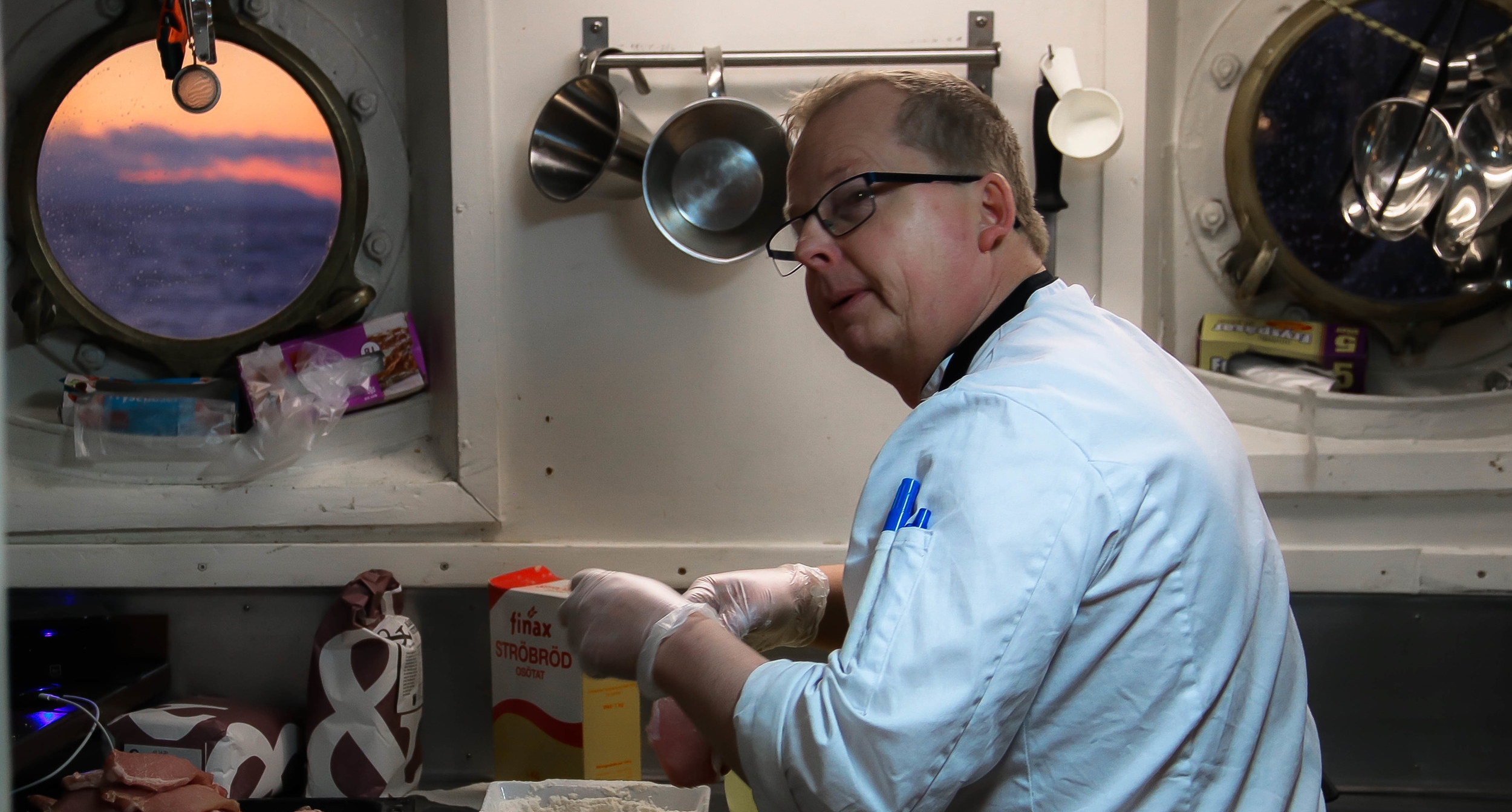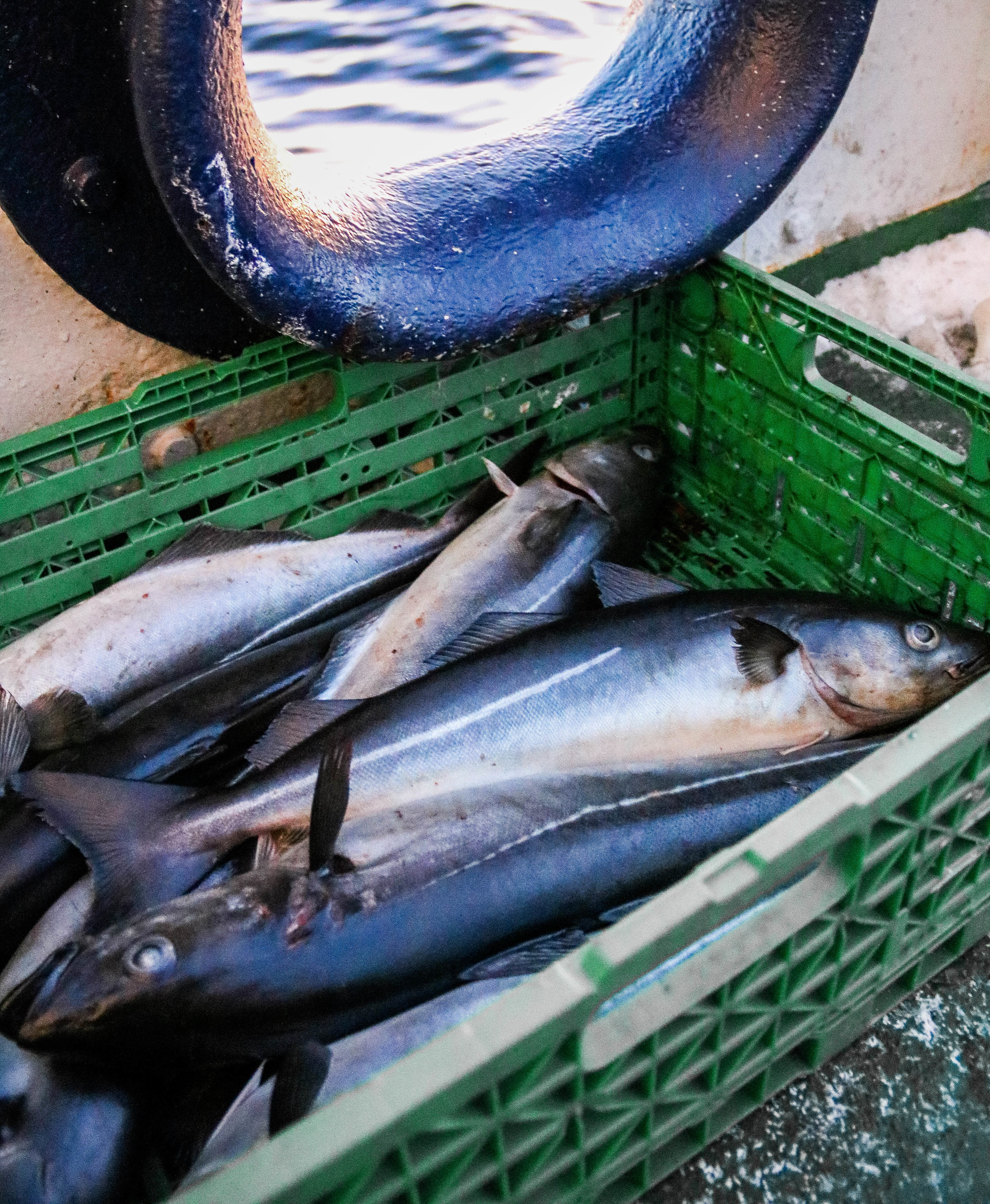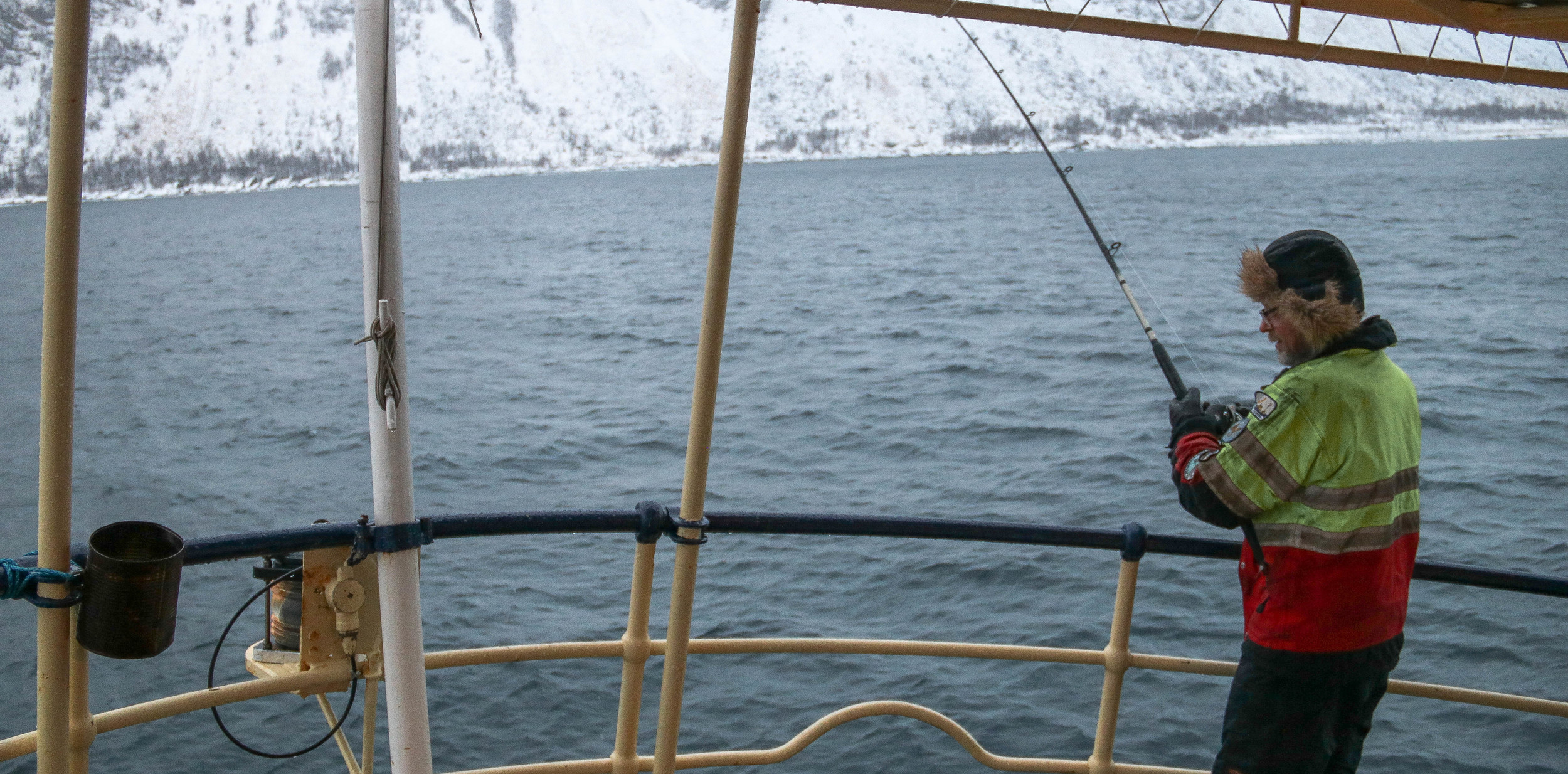The Norwegian Arctic.
Orca in the Arctic waters of Norway.
Most people I’ve spoken to about the Arctic are curious and enthused about this magical land. But that’s in the relative "comfort" of the summer period with constant daylight. Change a few elements to the Arctic equation, and people react very differently. So what 's different this time? 1: It’s January (almost perpetual darkness). 2: Temperature can be -10°C to -20°C 3: Swimming in 5°C sea. 4: The sea is filled with Orcas and Whales.
I thought this was one of the most exciting things to do, but at point 3, most people shivered at the idea of slipping into the Arctic waters. At point 4, the eyes widened even further.
Heading to the 66th parallel (the border to the arctic circle), Oslo is my gateway to the next leg of the trip. The airport staff is busy, as I get a taste of what awaits me further north.
As I'm flying up to Evenes, the afternoon quickly turns into sunset, and upon arrival at 15:30, it is already night. While ground staff in Oslo were frantically clearing up all the ice & snow, here it doesn't seem to be bothering anyone. It's just another normal winter day in the Arctic.
We embark the charming Malmö in the port of Narvik, and that same evening we plan the next day and try on our dry "D9 waterproof" suits. The vision of a snow covered ship when day is night, is a rare sight on a snorkelling trip!
The Malmö in the port of Narvik.
First thing we learn about being out in these conditions and chasing wildlife, is that any plans we make will most definitely change. Weather conditions can change, Orcas and Whales are on the move; Nature rarely cooperates with humans.
Captain & Waterproof staff map out our itinerary.
We are out of the fjords and in open waters, and as day breaks around 9am there is promise of seeing orcas. The sea is a little rough, and I don’t even have time to be bothered by the slight hint of seasickness because I’m already transfixed by what I see out in the waters.
5 or 6 black fins piercing though the waves in one eye shot. Once I look around, we have about 15-20 orcas swimming around us. I don't think I had mentally prepared myself to be so close, so soon. One of them even showed us some spy-hopping action. Families of adults, and young ones are here to feed on the Herring that spawn in these waters every winter.
And then, the giants arrived. The amazing Humpback whales, coming up to breathe, displaying just a portion of its huge 35 ton mass just a few metres from the ship. This is when it sunk in: Tomorrow, I'm swimming with them!
Humpback whale.
Into Gryllefjord for the evening for shelter. From the bridge, I tried to capture the sweeping lines of these glacial valleys.
Sketching the landscape from the bridge.
Gryllefjord. Pencil sketch.
Clear skies on our first day, our 2 zodiacs zipped off to the feeding grounds. A first brief dive helps us to get accustomed to the buoyancy of a dry suit, and to feel the water. Ducking your head underwater and peering into these dark deep waters was not without apprehension.
The dark, cold and uninviting arctic waters.
I’m used to the Mediterranean glowing blues, but this dark bottomless void was calming. Second dive was when Orcas were swimming right past us, and the prospect of setting eyes on these apex predators was not without apprehension either, however safe I “knew” I was. But then again, they may have been watching us intruders with the same mixed feelings.
In and out of the water was made easy, thanks to the nifty zodiacs.
The moment when you are about to look underwater into this big unknown dark space, is like that moment you're opening a door to that dark scary room. What are you going to see under there, that you can't decipher from above?
Just 3 fins above water, but about 10 orca under the surface! My mind had barely registered the reality of what I was looking at, that I was already hypnotised. My body took over, and instinctively I swam their way. Swimming as fast as I could with my flippers, I keep up with a pod of 10 Orca, including a baby about the length of a human.
A pod of Orca getting ready for their next Herring hunt.
They are on the move, disappearing into the far blue distance. I haul myself back onto the zodiac, and we cruise a little further. I'm back in the water as soon as I can, and we encounter the Humpback Whales. If apprehension was my previous feeling, this time it was verging on fear from the sheer mass of the creature. The next thing I knew, I was looking down under water, at 3 whales, cruising along 20m under me. Any possible fear is dissipated by this calm and harmless hypnotic spectacle. One starts shifting right under me, and starts rising slowly. How far is it going to rise, and has it seen me? Just as I think this, the whale tilts over to look at me, and begins to make a U-turn. It moves its mass through the water with such deliberate ease, the movement is akin to a giant manoeuvring truck. It rolls over to display its bright white under belly, and powers on into the distance with its hunting partners.
Humpback whale encounter on my first day.
This whole spectacle is in absolute silence, which is incredible considering the size of these animals. On a later plunge, I am transfixed by a pod of orca as they swim past me on my left. I am swimming hard to keep up, and as I turn my head towards the front of the pod, I pick up on a shape in my peripheral vision to my right. As I move my head, I am shocked to see 2 Humpback whales have just passed me, barely 5 meters away from me. If I’d turned just a few seconds earlier, I would have been looking right into the eye of these monsters.
How unnerving it is to be in this element where everything moves in silence, regardless of whether it’s a tiny fish, or a 35-ton whale. No sooner had they passed me, that one of them squirts out a big cloud of iron coloured poop, which all the fish swoop in to feed on, before I end up swimming through it! The whales then plunge down deep, out of sight into the blue dark depths. The herring schools are down there.
A word on these dry suits: Unlike the familiar wetsuit that allows water in, these dry suits are totally impermeable. Seals around the neck and wrists prevent any water from seeping in, while the feet are contained inside the suit.
Squeezing the air out of the suit is necessary to avoid resembling an inflated Michelin man, and to ensure the best swimming ability. Gloves and hood are thick, and the mask seals off the face from the cold. The only part that is in actual contact with the freezing water is the mouth area. Not a problem, it sounds worse that it is.
Enjoying the buoyancy of the D9 dry suit.
Swimming with one of the largest predators of this planet could seem like a risky endeavor, but like a moth to a flame, any trepidation was overwhelmed by curiosity and a spirit of inquiry.
As the only painter on board, I am called upon to create some daily cartoons on the notice board, to reflect something about the day's events.
Although felt-tip pens and white boards are not my specialty as a medium, I tried my best. 1. Gryllefjord & fat Orca. 2. When someone's snorkel got flung off the boat, an Orca surely used it as a new instrument. 3. The real story behind spy-hopping.
Enough to say that 5 days was not enough for this marvel of nature, and I feel this could easily become an addiction, or rather: A passion. I keep up my sketches of the surrounding mountains in between swims and the little bit of light we have left. We only have about 4 hours of daylight up here in January.
Silhouettes of the snow covered hills.
If you’re lucky, on these sorts of trips, one can meet some very interesting people who do this during most of the year. And some even as a profession: Such as the inspiring national geographic photographers Goran Ehlme (who joined me for my Arctic lecture in sweden) and Paul Nicklen. They were filming for the Danish natural history museum, tagging and taking biopsies of these whales. Both have travelled together across both poles on fascinating adventures with amazing encounters with all sorts of wildlife. One night, we were lucky enough to have them for dinner on board, and enjoy a lecture on a couple of these adventures involving Walruses and Leopard Seals. For dinner, our chef treated us all to fresh fish caught literally a few feet away from the kitchen.
On day 4, our specialist guides Eirik & Birgitta detected that the orcas were herding the herring up against the coast. Swimming in the shallows created a more intimate meeting, like being in a room instead of a large hall. This is where I try and sing to it, or rather; to her. Males have a tall straight dorsal fin, while females have a smaller rounded fin. As she approaches, and hears my ramblings (whatever she may have been interpreted), she clearly turns her head inquisitively my way for a moment, until she continues on her way, but seems to cruise for a while instead of powering off into the distance.
So, what is an Orca? You can view it like the largest dolphin, but it is essentially a whale, just like any of the Cetaceans. Also called a "killer whale", because whales are occasionally on their menu Where’s their eye? Orcas can look menacing due to their striking facial patterns, with their large white eye patch staring out at you. To locate their actual eye, you must go to the front of this eye patch, and drop down. And then you see a dimple in the outline behind the mouth, and here it is. They eye is squeezed right between these patterns, and all of a sudden, they seem a little cuddlier.
Our 5th night is rough. After rocking all night, everyone is late to breakfast due to a lack of sleep. We found shelter in a nearby fjord and realised that today, there will be no snorkelling. We head back to Narvik, 3 hours of rocking & rolling, as things flew about the cabin, chair hopping about like we had a poltergeist in here! This time around, I'm resisting to sea-sickness, but judging from the sounds in the next cabin, others are not so lucky.
On this last night, a brief slideshow of our photos with some great shots of the week, above and under water. This was followed by the presentation of an improvised contest of “your imaginary orca”, which Marlynda and I initiated at the beginning of the week. Those who chose to participate got to flex their creative muscles. Many great and fun proposals, but our dark horse Dario, came through and presented a very imaginative piece. A beautiful drawing, where we witness the joining of forces between the Humpbacks & Orcas, evolving into a new species: "The Killback Whale". The prize was one of my Orca sketches. Check out Dario's drawing below.
The other fascinating phenomenon in the Arctic is the Aurora Borealis. So after chasing whales, we chased after the skies. Armed with tripods, our group gathered beyond the town’s streetlights, to capture with long exposure these odd swirling lights.
The Aurora filled skies above Gryleefjord.
We are so accustomed to seeing things moving with air or sea currents, such as waves, clouds, or fields of grass in the wind. The northern lights are notoriously hypnotizing because they don’t follow any of these patterns. They move in their own manner, and it’s only by seeing them in person that you can really understand it.
They are organic shapes that snake across the sky regardless of wind and weather systems, dictated by invisible magnetic fields, and their light glows and dims without warning. Whereas you can predict where a cloud is going to move to, northern lights do not follow such familiar rules, and that’s probably why they seem so magical. One of the surprising things I found was that there actually exists an App for Aurora predictions. Definitely a recommended App for any “wannabe” adventurer.
Watch this video to understand the phenomenon, and this hypnotising view of them in from space. Colours vary depending on altitude; Reds are high (above 180km), Greens are middle (120-180km), violets are low (90-100km). Full explanation here.
Aurora Borealis from space.
The next leg of the trip takes me to Tromso. On a full moon day/night, we take a ferry north up the coast, stopping off at a few towns on the way.
From there, it was short drive to a beautiful area called the Lyngen Alps, where the real charm and harshness of the Arctic winter was on display.
The frozen waterfalls of the Lyngenalps.
Birch trees in snow. Pencil, sketchbook.
Road on Lyngen Fjord. oil on board. 20x30cm
Torsken in Gryllefjord, 20x30cm, oil on panel
Broken ice, Lyngen Fjord.oil on board. 20x30cm
Lyngseidet Boat yard. oil on board. 20x30cm
The lifeless yet vivid vistas of the north.
Time seems to stop in these frozen landscapes. Unfortunately, with the limited daylight hours of the arctic winter, you can only appreciate them for a brief part of the day. It makes your time outdoors that much more precious, and maybe that's what makes them seem so special.
































